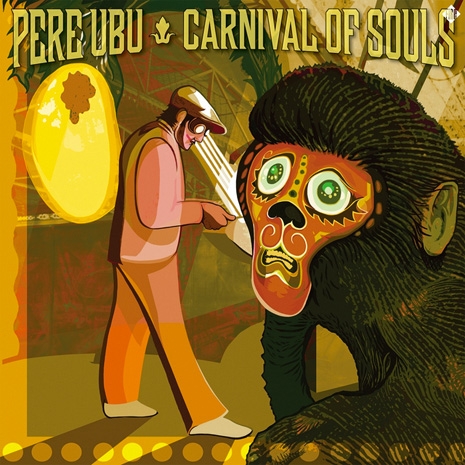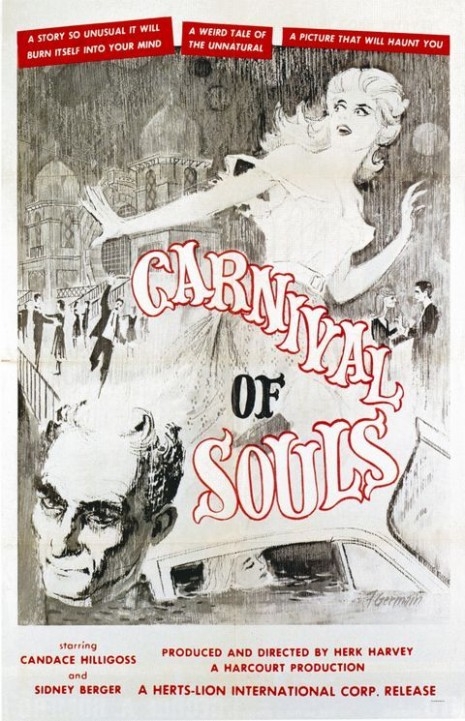
The adventurous, impressive, and long-surviving art rock band Pere Ubu have released well over a dozen albums, few of which sound overmuch like each other, all of which sound like Pere Ubu. Their last, Lady From Shanghai, was an especially big leap, laden with bold electronics experiments and even odder arrangements than Ubu’s usual, and it’s just glorious.
Recently, the band announced the forthcoming release of its 15th studio LP, Carnival of Souls. It’s tempting to assume that this might be an album about the disquietingly atmospheric 1962 Herk Harvey film Carnival of Souls, as the band did a live underscore to the film just last summer, and a video from the album, “Road to Utah,” is made up of clips from that movie, a movie which in fact takes place on the road. To Utah.
But it’s folly, even with a ton of evidence like that in your corner, to think that one can jump to that kind of easy conclusion with regard to a band that copped its name from a cagey absurdist like Alfred Jarry. With Ubu, the “obvious” should rarely be taken at face value. Per the band’s founder and singer David Thomas on ubuprojex.com:
The album is not about the movie. The album is ‘about’ a complex sensual response to living in a world overrun by monkeys and strippers who tickle your ears, cajole you to join in with their cavorting and then become vindictive when you decline. I got rid of my TV because I don’t want them in my house. I got rid of my phone because I don’t want them calling me. So if you understand that and add in several more keyframes and make at least two more intuitive jumps, then you can see what role the movie has as ambient background noise - in the same way that sun shining through the trees along the Yellowstone River has as a reference point to Kerouac’s ‘On The Road.’
Since that’s only so illuminating, I reached out to Ubu’s longtime drummer, Steven Mehlman, for clarification on what the new music may have to do with the film:
The answer is yes and no. Yes, some of the music is based on the music we did for the live soundtrack. The tour we did after that was with a portion of our expanded lineup and we started refining some of those songs, and roughly half of each show was improvised (and recorded) and led to the other half of the album. One song is straight from the live recordings.
So there you have it. The other video from the album, due in September, is for “Irene,” a song that features beautiful solo work from the band’s newest member, clarinetist Darryl Boon. It’s a simple, surreal video, the focus of which is a mask, as eerie and haunting as the song itself, made by the Brighton-based puppeteer Daisy Jordan, founder of Barely Human Puppets.
Previously on Dangerous Minds
‘Pere Ubu is like a cup!’ insists David Thomas
‘Self-expression is evil’: the mind-boggling beauty of David Thomas and Two Pale Boys
Pere Ubu’s David Thomas is pissed off about band member visa approval rigamarole






